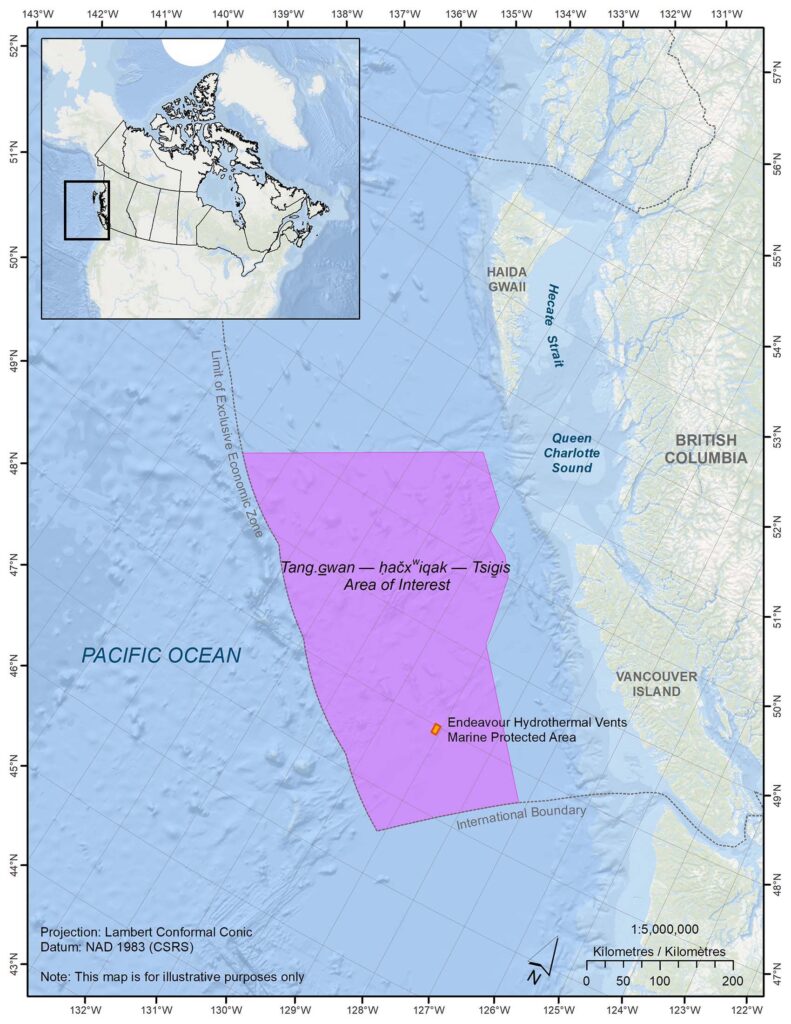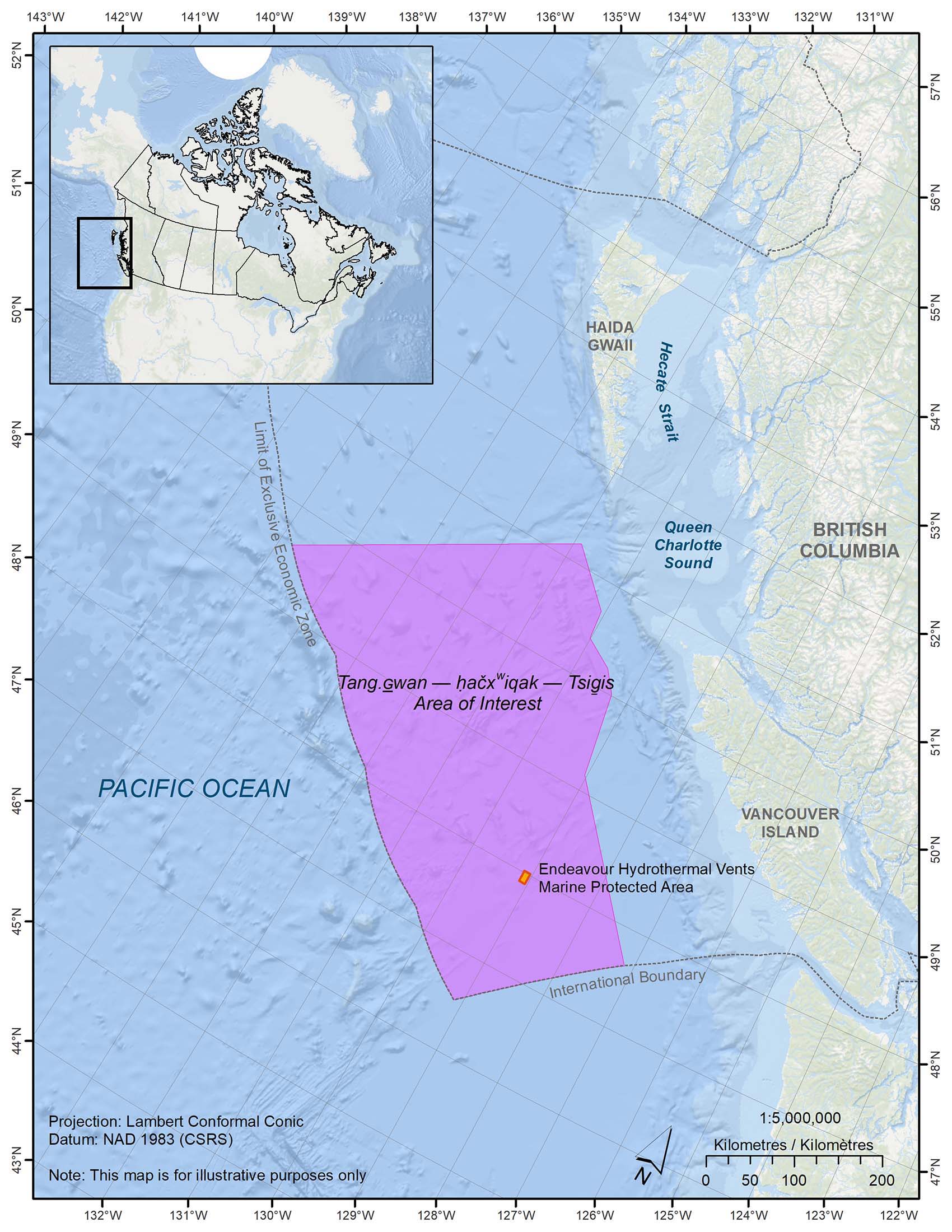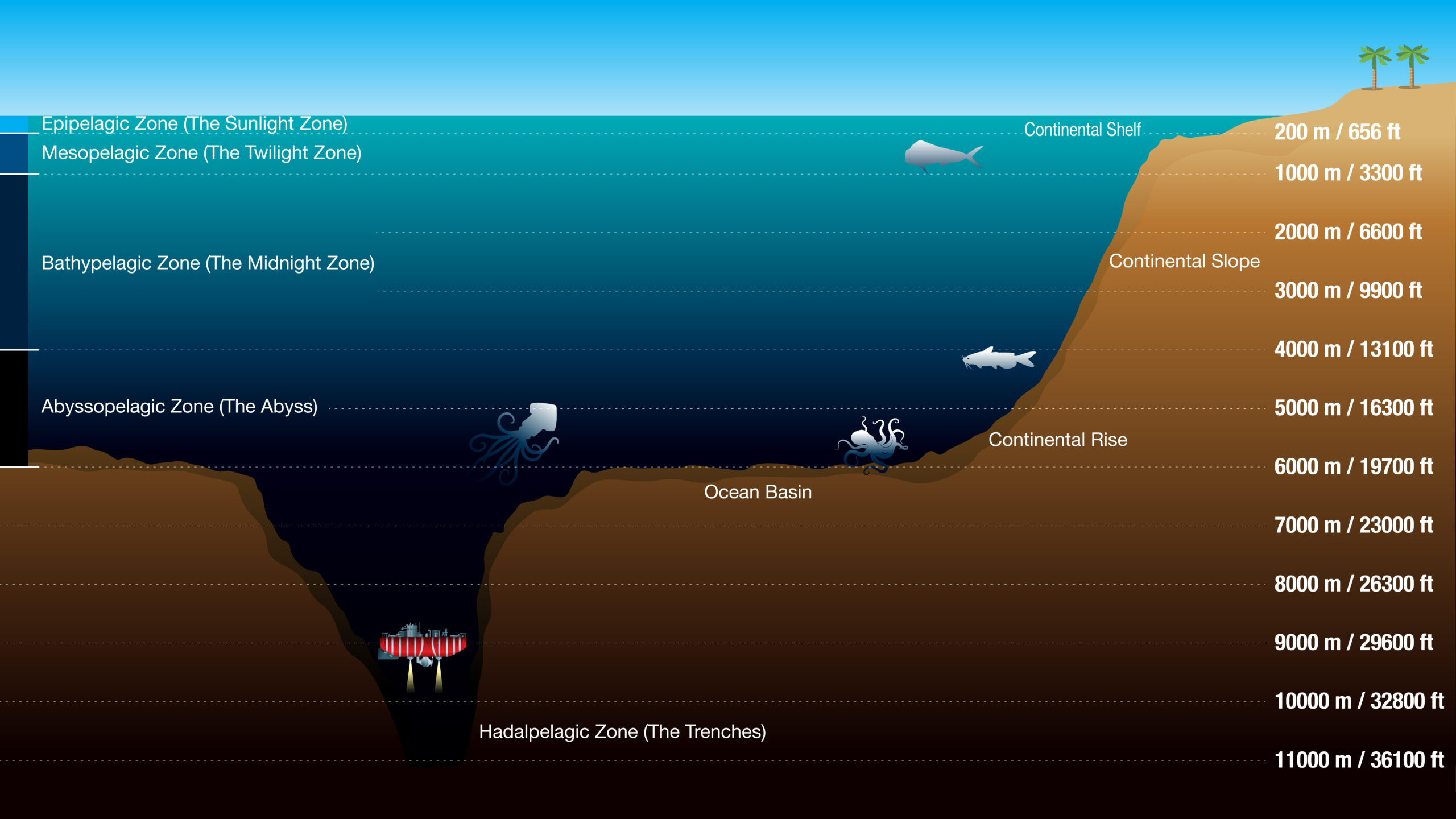The ocean, which Quatsino First Nation knows as da̱ms, is a physical, spiritual and cultural resource, says Chief Tom Nelson.
“Da̱ms are the life-blood of our territory,” he explained in a statement.
The nation has a word to refer to the deepest part of the ocean, too — the word Tsig̱is refers to “a monster of the deep.”
Other coastal nations also have words in their language for the deep sea. In the Nuu-chah-nulth language, the word ḥačxwiqak means “the deepest part of the ocean.”
In Haida, the term for deep ocean is Tang.ɢwan.
These Indigenous groups — the Quatsino First Nation, the Nuu-chah-nulth Tribal Council, the Council of the Haida Nation and Pacheedaht First Nation — utilized these terms to refer to a huge swath of deep sea that’s set to become a protected area in partnership with the government of Canada.
The proposed Tang.ɢwan – ḥačxwiqak – Tsig̱is Marine Protected Area (MPA) spans 133,019 square-kilometres of undersea area off Vancouver Island.
For context, that size is about 1,000 times larger than the City of Vancouver.
We don’t often think about protecting the deep sea — but the ocean floor is a delicate ecosystem that actually faces various threats from industry such as undersea mining, impacts from the oil and gas industry and fishing.
Deep under the water in this area, from 270 to 3,500 metres under the sea, there are more than 46 underwater ancient volcanic mountains known as seamounts — with steep slopes where many mysterious deep-sea creatures live.
The seamounts, though deep underwater, have long-held connections to the Indigenous communities who have lived near them for millenia.
For Haida people, one of the seamounts is known as the home of an ancient supernatural being known as SGaan Kinghlas.
There are also rare hydrothermal vents — which are like “hotspot” fissures on the ocean floor that eject mineral-rich heated water stemming from deep in the Earth’s core. All of the known hydrothermal vents in Canada’s waters are found in this area.
The vents are important because they support many species — with the rising of nutrient-rich water helping planktonic life that in turn attracts large species including whales and sharks.





